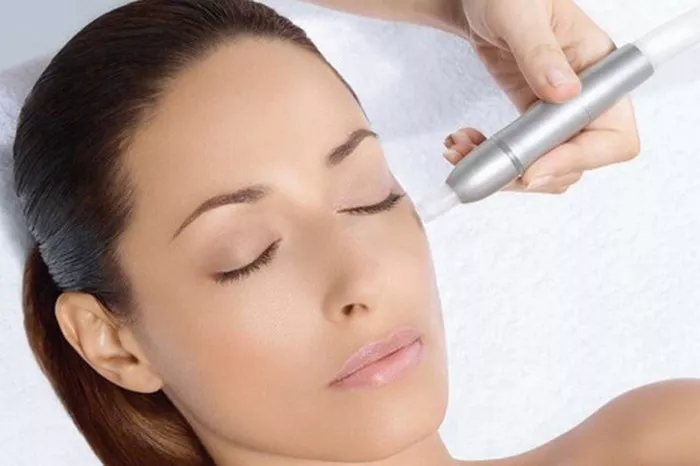Microdermabrasion is a popular non-invasive cosmetic procedure that helps improve the appearance and texture of the skin. It involves exfoliating the outermost layer of the skin using fine crystals or a diamond-tipped wand, stimulating collagen production, and revealing a smoother, more youthful complexion. If you are considering microdermabrasion, you may be wondering how often you can undergo this treatment to achieve optimal results. In this article, we will explore the recommended frequency of microdermabrasion sessions and factors to consider for an effective and safe treatment plan.
Understanding Microdermabrasion
Microdermabrasion is a gentle yet effective exfoliation technique that targets various skin concerns, including fine lines, wrinkles, uneven skin tone, acne scars, sun damage, and clogged pores. During the procedure, a handheld device is used to deliver a controlled stream of crystals or a diamond-tipped wand across the skin’s surface. This process removes dead skin cells, unclogs pores, and stimulates collagen production, resulting in a more rejuvenated complexion.
Factors Influencing the Frequency of Microdermabrasion
The frequency of microdermabrasion treatments can vary depending on several factors. It is important to note that each individual’s skin type, concerns, and goals may require a customized treatment plan. However, there are some general guidelines to consider:
1. Skin Type and Sensitivity
Different skin types have varying tolerances for exfoliation. Sensitive or delicate skin may require longer intervals between treatments to allow for proper healing and minimize the risk of irritation. On the other hand, individuals with thicker or more resilient skin may tolerate more frequent treatments.
2. Skin Concerns
The severity of your skin concerns and the desired level of improvement will influence the frequency of microdermabrasion sessions. For minor concerns or regular maintenance, fewer treatments may be necessary. However, for more significant issues or targeted improvements, a series of sessions may be recommended.
3. Treatment Intensity
Microdermabrasion can be performed at different intensities, ranging from mild to more aggressive. Mild treatments, such as those with less intense crystal flow or a lower suction level, are generally gentler on the skin and may allow for more frequent sessions. Aggressive or deeper treatments may require longer intervals between sessions to allow for proper healing.
4. Combination with Other Treatments
Microdermabrasion is often combined with other cosmetic treatments, such as chemical peels or laser therapies, to enhance results. If you are undergoing a combination treatment, the frequency and timing of microdermabrasion may be adjusted accordingly to ensure optimal results without overloading the skin.
Recommended Frequency Guidelines
While individual needs may vary, here are some general guidelines for the frequency of microdermabrasion treatments:
1. Regular Maintenance and Mild Concerns
If you are seeking regular maintenance or have mild skin concerns, such as dullness or minor texture irregularities, monthly microdermabrasion sessions may be sufficient. This frequency allows for consistent exfoliation and helps maintain a healthy, vibrant complexion.
2. Moderate Skin Concerns
For individuals with moderate concerns, such as mild acne scarring, sun damage, or fine lines, a series of microdermabrasion treatments spaced two to four weeks apart may be recommended. This interval allows for proper healing and encourages collagen production to gradually improve the skin’s texture and tone.
3. Targeted Improvement and Aggressive Treatments
If you have more significant skin concerns, such as deep acne scars or pronounced sun damage, a more intensive approach may be necessary. In such cases, a series of microdermabrasion sessions performed every two to three weeks for several months may be recommended. However, it is crucial to consult with a qualified aesthetic professional to ensure the treatment plan is tailored to your specific needs and to monitor the skin’s response to the more aggressive treatment.
4. Post-Treatment Recovery
After each microdermabrasion session, the skin needs time to heal and regenerate. It is essential to follow the aftercare instructions provided by your aesthetic professional and allow the skin to recover fully before scheduling the next session. Typically, the skin may appear slightly red or sensitive immediately after the treatment, but this should subside within a day or two.
Consultation with an Aesthetic Professional
To determine the ideal frequency of microdermabrasion sessions for your skin, it is crucial to consult with a qualified aesthetic professional. They will assess your skin type, concerns, and treatment goals, and recommend a personalized treatment plan. They can evaluate your skin’s response to the initial treatments and make any necessary adjustments to achieve the best possible results.
Conclusion
Microdermabrasion is a versatile exfoliation technique that offers numerous benefits for the skin. The frequency of microdermabrasion sessions depends on various factors, including skin type, sensitivity, concerns, treatment intensity, and combination with other therapies. Monthly treatments are often suitable for regular maintenance, while a series of sessions every two to four weeks may be recommended for mild to moderate concerns. For targeted improvement or aggressive treatments, more frequent sessions every two to three weeks may be necessary. It is crucial to consult with an experienced aesthetic professional to develop a personalized treatment plan that aligns with your specific needs and ensures the best possible results for your skin.


